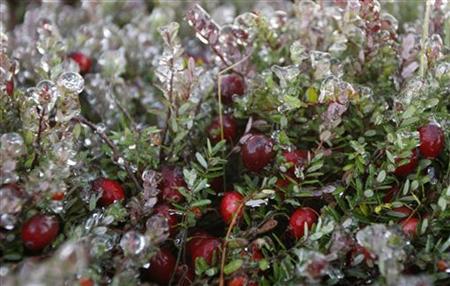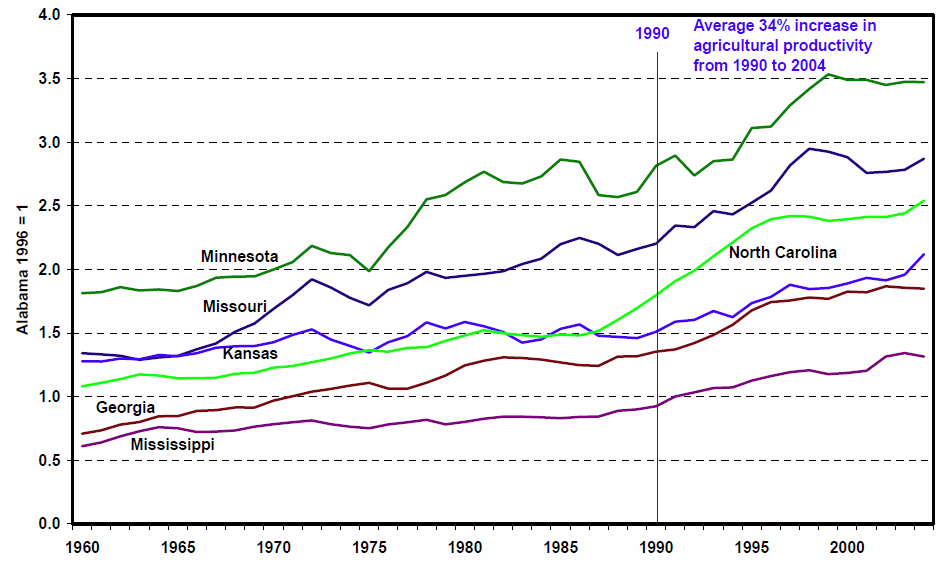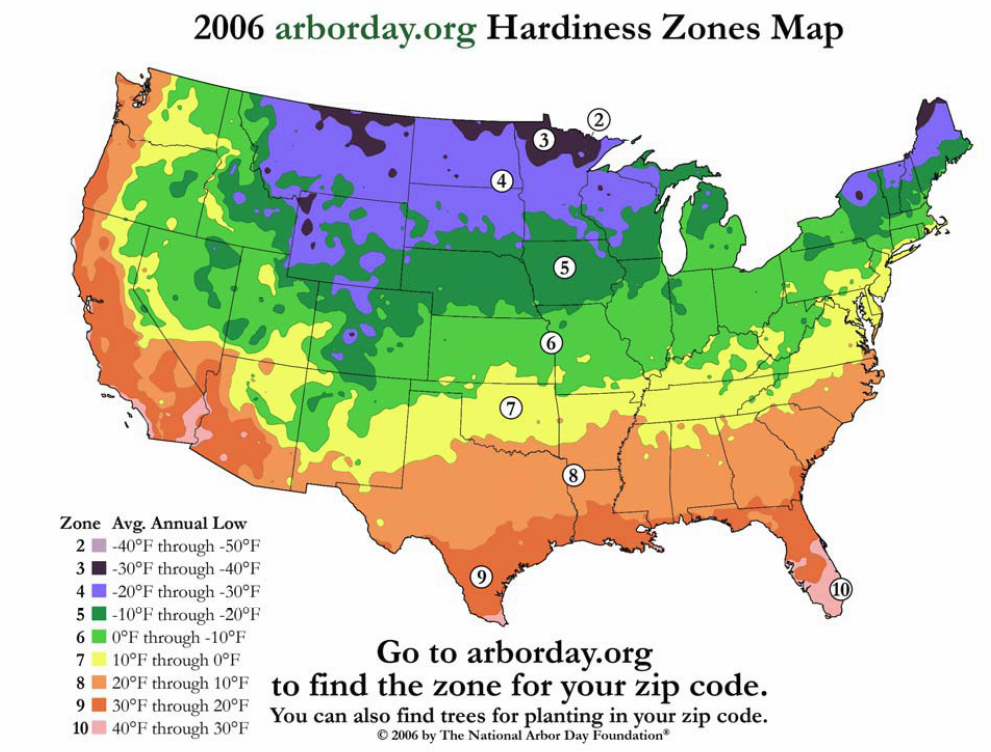
There's been some concern lately over climate and agriculture. In the last few days we've had headlines such as:
Crops under stress as temperatures fall (UK Telegraph)
Canadian Wheat Output May Fall on Dry, Cool Weather (Bloomberg)
Southeastern Missouri farmers try to overcome wet spring, soggy crops (TV4 Kansas City)
About the same time as these stories I got an email from David Archibald that talks about shifts in growing areas in the USA and the increased yields we've seen in the past quarter century. The concern of course is that those gains may vanish with the advent of a quiet solar cycle:
Anthony,Quantifying the US Agricultural Productivity Response to Solar Cycle 24
The attached article, dated 30th December 2008, was noted on Icecap in early January.
The prediction in it appears to have been borne out by subsequent events. Note this report of widespread frosts:
Canada frosts the most widespread in recent memory (Reuters, also source of photo above)
Your readers may benefit from having it reposted on WUWT. It is a good example of the practical application of Friis-Christensen and Lassen theory, and thus solar science to practical matters at ground level.
David
In 2006, The National Arbor Day Foundation updated the 1990 US Department of Agriculture map of plant hardiness zones for changes in the annual average minimum temperate over the intervening sixteen years.
That map is reproduced following:
Relative to the location of the zones in the 1990 USDA map, hardiness zones have shifted northward by the following amounts relative to the latitude band:
30° N 110 km northward shift
35° N 200 km northward shift
40° N 280 km northward shift
The improvement in growing conditions resulting from this northward shift in annual average minimum temperature caused an increase in agricultural productivity. Following is a graphic of the agricultural output of a number of US states accounting for 19% of US agricultural production:

Productivity is calibrated against Alabama’s production in 1996.
It is apparent from the graphic that there was a step change in the rate of increase of agricultural production at about the time the USDA plant hardiness zone map was created in 1990. Over the subsequent fourteen years, agricultural production in these six states rose 34%. The USDA state productivity data is available here.
A proportion of the increase would have been due to the introduction of GM crops and other changes in agricultural practices. Nevertheless, the productivity growth is substantial and coincident with improved climatic conditions.
The change in plant hardiness zones over the 1990 to 2006 period is explained by solar cycle length changes. Solar Cycle 20 from 1964 to 1976 was 11.6 years long. Solar Cycle 21 was shorter than average at 10.3 years and Solar Cycle 22 from 1986 to 1996 was very short at 9.6 years long. There is a correlation between solar cycle length and temperature over the following solar cycle. In the mid-latitudes of the US north-eastern seaboard, this is 0.7° C for each year of solar cycle length.
With the cumulative change in solar cycle length between Solar Cycle 20 and Solar Cycle 22 of two years, this would have translated to a 1.4º C increase in temperature by early this decade relative to early 1970s. This is reflected in the northward shift of plant hardiness zones as mapped by The National Arbor Day Foundation.
By virtue of a lack of Solar Cycle 23 sunspots, solar minimum of the Solar Cycle 23 to 24 transition appears to have been in late 2008. This makes Solar Cycle 23 three years long than its predecessor. Consequently, using the 0.7° C per year of solar cycle length relationship, there will be a 2.1º C decline in temperature of the mid-latitudes next decade during Solar Cycle 24.
Using the calibration provided by the climate shift caused by the Solar Cycle 20 to 22 change in solar cycle length, the following shifts in climatic zones, and thus growing conditions, are estimated:
30° N 160 km southward shift
35° N 300 km southward shift
40° N 420 km southward shift
Assuming that two thirds of the productivity increase in mid-western states from 1990 to 2004 was climatically driven, then the productivity decline in this region due to Solar Cycle 24 is expected to be of the order of 30%. The total US agricultural productivity decrease would be less than that at possibly 20%, equating to the export share of US agricultural production.
David Archibald
30th December, 2008




Reader Comments
to our Newsletter